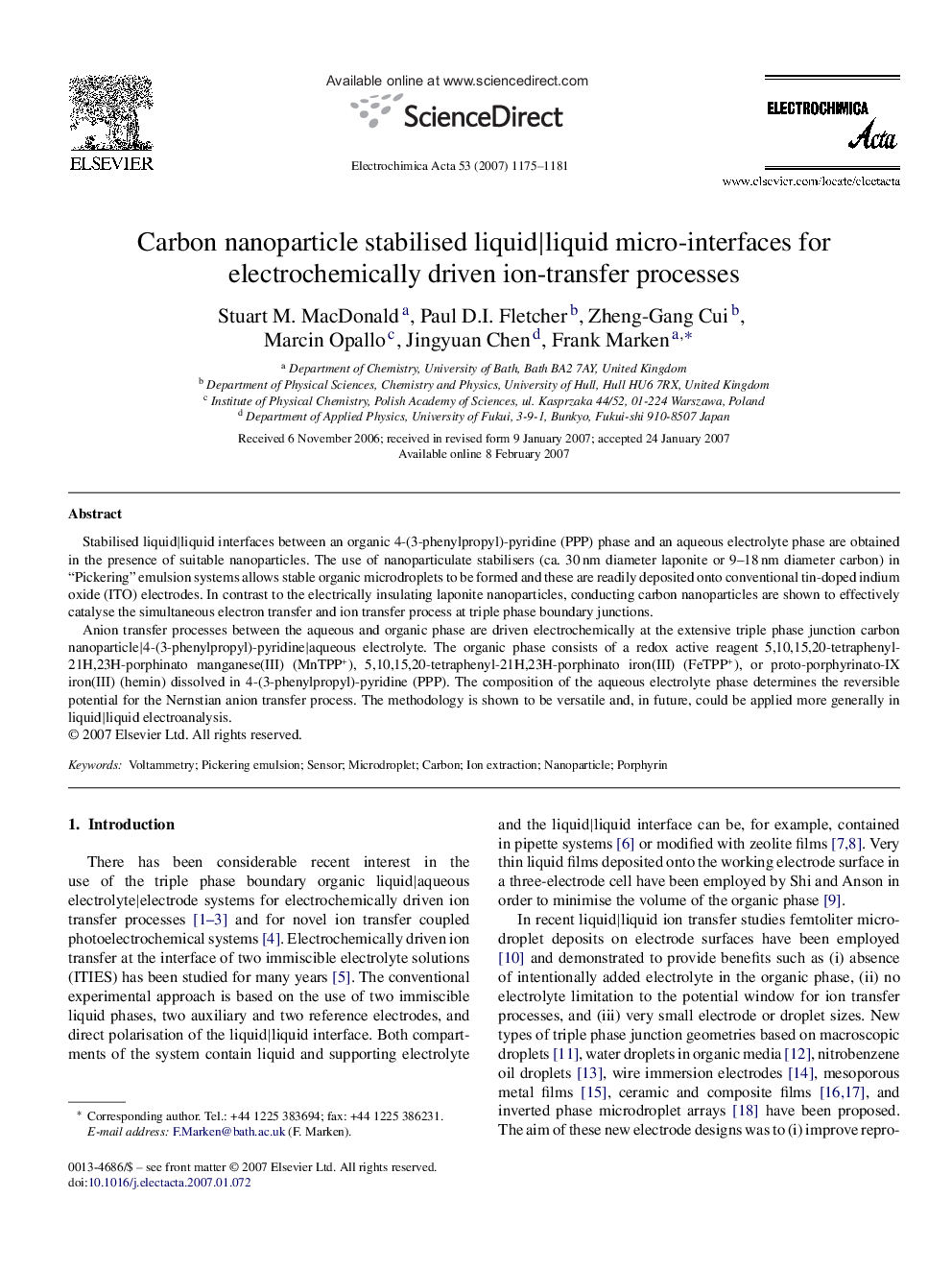| Article ID | Journal | Published Year | Pages | File Type |
|---|---|---|---|---|
| 195227 | Electrochimica Acta | 2007 | 7 Pages |
Stabilised liquid|liquid interfaces between an organic 4-(3-phenylpropyl)-pyridine (PPP) phase and an aqueous electrolyte phase are obtained in the presence of suitable nanoparticles. The use of nanoparticulate stabilisers (ca. 30 nm diameter laponite or 9–18 nm diameter carbon) in “Pickering” emulsion systems allows stable organic microdroplets to be formed and these are readily deposited onto conventional tin-doped indium oxide (ITO) electrodes. In contrast to the electrically insulating laponite nanoparticles, conducting carbon nanoparticles are shown to effectively catalyse the simultaneous electron transfer and ion transfer process at triple phase boundary junctions.Anion transfer processes between the aqueous and organic phase are driven electrochemically at the extensive triple phase junction carbon nanoparticle|4-(3-phenylpropyl)-pyridine|aqueous electrolyte. The organic phase consists of a redox active reagent 5,10,15,20-tetraphenyl-21H,23H-porphinato manganese(III) (MnTPP+), 5,10,15,20-tetraphenyl-21H,23H-porphinato iron(III) (FeTPP+), or proto-porphyrinato-IX iron(III) (hemin) dissolved in 4-(3-phenylpropyl)-pyridine (PPP). The composition of the aqueous electrolyte phase determines the reversible potential for the Nernstian anion transfer process. The methodology is shown to be versatile and, in future, could be applied more generally in liquid|liquid electroanalysis.
